United States stamp Scott #117 is part of the 1869 Pictorial Issue, the first series of U.S. postage stamps to move away from exclusively portraying statesmen and national leaders. Instead, the issue featured a mixture of historical scenes, transportation themes, and allegorical subjects.
Scott #117 is the 12-cent denomination in this series, produced in 1869 and primarily intended for use on heavier domestic letters or on international mail when combined with other denominations. Within the broader context of the series, it represented a shift in both design philosophy and postal practicality, as the Post Office Department sought to modernize its issues while still meeting expanding postal rate structures.
There are no radically different varieties of Scott #117 beyond differences in shade, paper, and the application of the grill, though specialists recognize nuances in impression clarity and color strength.
Design & Print
Scott #117 was printed by the National Bank Note Company, which held the federal contract to produce U.S. stamps at that time. The stamp was issued in 1869, during the tenure of Postmaster General Alexander Randall, who oversaw changes to U.S. postage production.
Approximately 6,095,000 examples were produced, a figure reflecting both the widespread need for higher-value postage and the growing efficiency of the printing process. The design features the steamship Adriatic, a symbol of oceanic travel and mail transport. The ship was part of the Collins Line, which competed with British steamship companies for dominance in transatlantic service.
The stamp was printed in green on hard wove paper and received the “G” grill embossing, which was designed to break fibers in the paper to better absorb cancellation ink and prevent reuse. The 12-cent denomination is prominently inscribed, framing the vignette of the ship in motion at sea.
Postal Usage
The 12-cent denomination served multiple postal needs at the time of issue. It was commonly used for the double-weight domestic letter rate, which was 6 cents per half ounce beginning in 1863, making the 12-cent stamp suitable for one-ounce letters. It was also paired with other denominations to satisfy international postal rates, especially transatlantic mail.
For example, the 12-cent stamp could be combined with lower values to meet the 28-cent British packet rate in effect during the late 1860s. The period also marked ongoing adjustments to postal agreements between the United States and European nations, meaning the 12-cent denomination was a practical necessity for flexible combinations of rates.
While not the most common single-use stamp of its era, Scott #117 provided essential coverage for medium- to higher-rate services in both domestic and foreign correspondence.
Identification
Scott #117 is a green stamp perforated 12 and produced on hard wove paper with a G grill. The grill, measuring approximately 9–13 points by 11–13 points, is an important identification feature, as earlier or later issues either lack grills or show different grill types.
The vignette depicts the steamship Adriatic sailing to the left, with fine engraved detail visible in the rigging, smoke, and waterlines. A key identifying feature is the placement of the denomination “12” in oval frames at the lower corners, along with the word “CENTS” spelled out beneath the ship.
Collectors and researchers distinguish Scott #117 from other 1869 Pictorial Issue stamps primarily by color and subject, as no other denomination in the set portrays the steamship. It is important to confirm the green ink shade and the presence of the grill to separate it from reprints and from other values in the issue that share the same stylistic frame design.



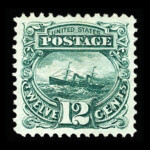
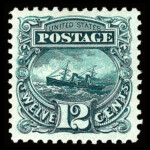
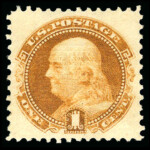
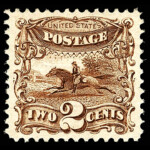
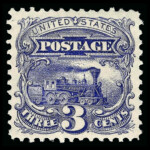
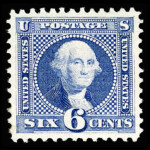
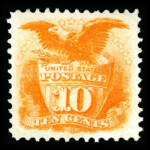

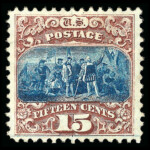
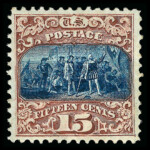

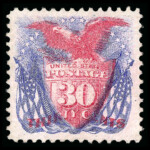













Ask A Question Or Leave A Comment